From some of the most famous figures of America’s mythic frontier to modern day activists, the contributions of Native American (and First Nations) individuals to the history of North America is often overlooked or underplayed in our national stories. These 9 books aim to help set the record straight by putting the stories of Native Americans and First Nations figures front and center—often in their own words. From Geronimo and Sitting Bull to lesser-known figures such as Mary Crow Dog and Standing Bear, these books introduce new perspectives, even on stories that you were pretty sure you already knew…

Geronimo
Drawing on a lifetime of research, author and historian Robert M. Utley “achieves his goal of humanizing Geronimo” in this “meticulous and finely researched” book (Publishers Weekly) that aims to strip away many of the myths and rumors that have always surrounded this legendary figure and present a picture of one of the most iconic figures of the American West as a man, rather than a tall tale. From his days as an Apache warrior to his capture, his time as a fairground attraction, and his later life, this “sure-to-be-a-classic book” presents a “fast-paced and engrossing” (Wild West Magazine) portrait of Geronimo’s life.
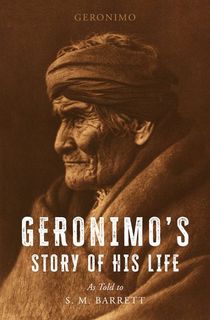
Geronimo's Story of His Life
In the 1860s, Geronimo was one of the most feared raiders of the “Apache Wars.” By 1886, he was a prisoner of war, having surrendered for the last time. In 1905, he rode in President Theodore Roosevelt’s second inaugural parade. That same year, he agreed to tell the story of his life to S. M. Barrett, a superintendent of education from Lawton, Oklahoma. The result is this one-of-a-kind book, which tells the story of one of the most mythologized figures of the American West in his own words, laying out the details of his life, his motivations, his philosophies, and what drove him through conflict, imprisonment, and beyond.

Sitting Bull
Famous for his role in the defeat of Custer’s forces at the Battle of Little Big Horn, Sitting Bull stood out as one of the most memorable figures of the American West. Even after his surrender, he became a performer in Buffalo Bill’s Wild West Show, helping to cement his legacy as emblematic of the era. Now, in this “gripping” narrative, historian Robert M. Utley “transforms Sitting Bull, the abstract, romanticized icon and symbol, into a flesh-and-blood person with a down-to-earth story” (New York Times Book Review).
Winner of the Spur Award for best Western nonfiction, a main selection of the History Book Club, and a New York Times Notable Book, Utley’s portrait “clears the screen of the exaggerations and fantasies long directed in the name of Sitting Bull” (New York Times Book Review).
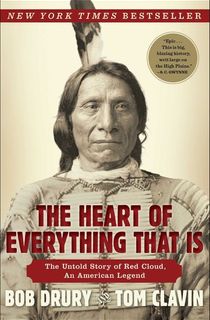
The Heart of Everything That Is
“A page-turner with remarkable immediacy” (Boston Globe), this “compelling and fiery narrative” (USA Today) brings to vivid life the story of Red Cloud, one of the only Native American chiefs ever to defeat the United States Army and sue for peace on his own terms—even if that peace was short-lived. Before towering figures such as Crazy Horse, Sitting Bull, and Geronimo, Red Cloud led his people to claim control of nearly one-fifth of the contiguous United States. Drawn from a recovered autobiography and extensive historical research, the story of Red Cloud is “a quintessentially Western tale of bold exploits, tough characters, brutal conditions, and a lost way of life” (Salon).
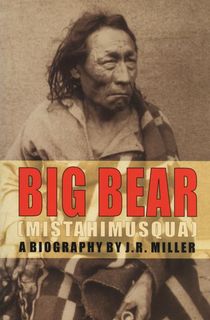
Big Bear (Mistahimusqua)
One of the First Nations chiefs who objected to signing treaties with the Canadian government, Big Bear became a pivotal part of Native resistance on the Canadian Plains. In 1885, despite his attempts at using nonviolent resistance to oppose the Canadian government, he was captured by Mounted Police and imprisoned under charges of treason. He was 60 years old at the time and died shortly after his release. More than a hundred years later, his story can finally be told in this intricately researched biography by J. R. Miller, who teaches Canadian history at the University of Saskatchewan.
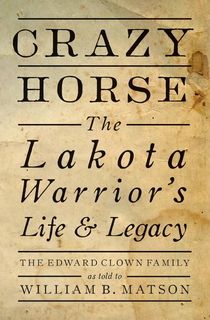
Crazy Horse
Much ink has been spilled about Crazy Horse over the years, but in this oral history, “for the first time the first-hand account of Crazy Horse is told” (Capital Journal). The Edward Clown family are the closest surviving relatives of the legendary Lakota warrior, and here they are telling the stories that have been passed down through their families for generations. “Yes, it does go into Little Big Horn and Custer for those that only know that part of the story. But this book is so much more than that,” writes Bookroom Reviews, praising this “must read” book that brings a new angle to one of the West’s most familiar stories.
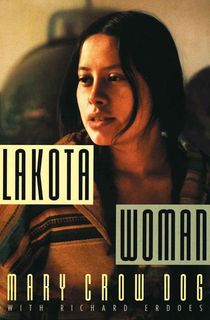
Lakota Woman
A national bestseller and winner of the American Book Award, adapted into a TV movie on TNT, Mary Crow Dog’s “searing autobiography is courageous, impassioned, poetic, and inspirational” (Publishers Weekly). Growing up impoverished on the Rosebud Indian Reservation in South Dakota, she became swept up in the tribal pride movement that was growing among her people in the 1960s, culminating in her participation in the Trail of Broken Treaties and the 1973 Occupation at Wounded Knee.
In this “gritty, convincing document of one woman’s struggle to overcome poverty and oppression in order to live in dignity” (Kirkus Reviews), she tells her unforgettable story, in her own words.

The Chiefs of Council Bluffs
In the early years of the 19th century, the land along the Missouri River Valley was changing. Fur traders, European settlers, and other outsiders were pouring in, and the growing United States was signing treaties and claiming land from the local tribes. In this illustrated history, illuminated with drawings by Brent Fredrickson, Gail Geo Holmes explores the lives of five very different men who led their people during this turbulent time.
From Billy Caldwell, the son of a Mohawk mother and a British Loyalist officer during the Revolutionary War, to Standing Bear, a civil rights leader who later argued in U.S. District Court that Native Americans are “persons within the meaning of the law,” becoming the first Native American judicially granted civil rights, these fascinating leaders represent not only their times but a changing world.
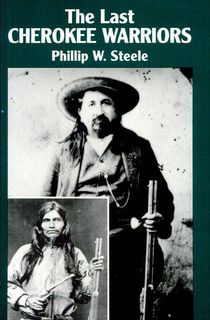
The Last Cherokee Warriors
Near the end of the 19th century, most of the traditional lands and ways of life of the Cherokee and other Native peoples had been ground out by the encroach of European settlers. Holdouts of a way of life that was dying or being taken from them, two “last warriors” are chronicled in this page-turning book by author Philip Steele. Ned Christie was accused of killing a US Marshal and spent five years evading capture while trying to prove his innocence, and Ezekiel Proctor went on trial, which devolved into the Goingsnake Massacre, leaving 11 people dead.
This post is sponsored by Open Road Media. Thank you for supporting our partners, who make it possible for The Archive to continue publishing the history stories you love.
